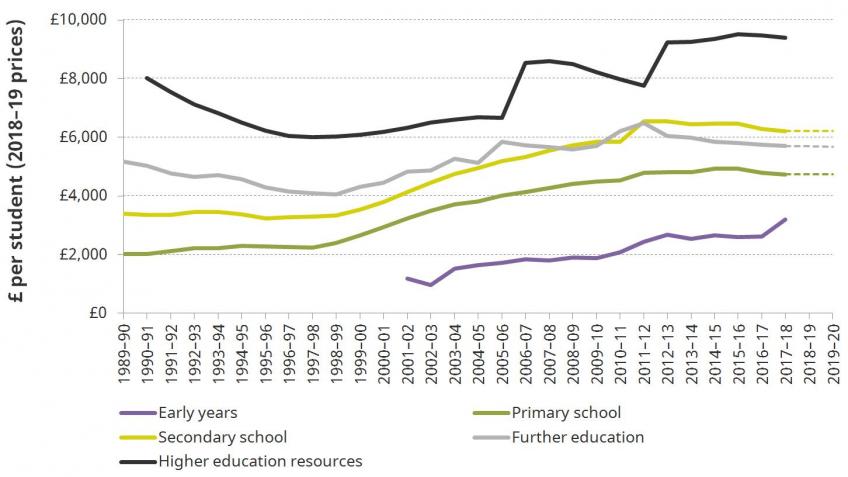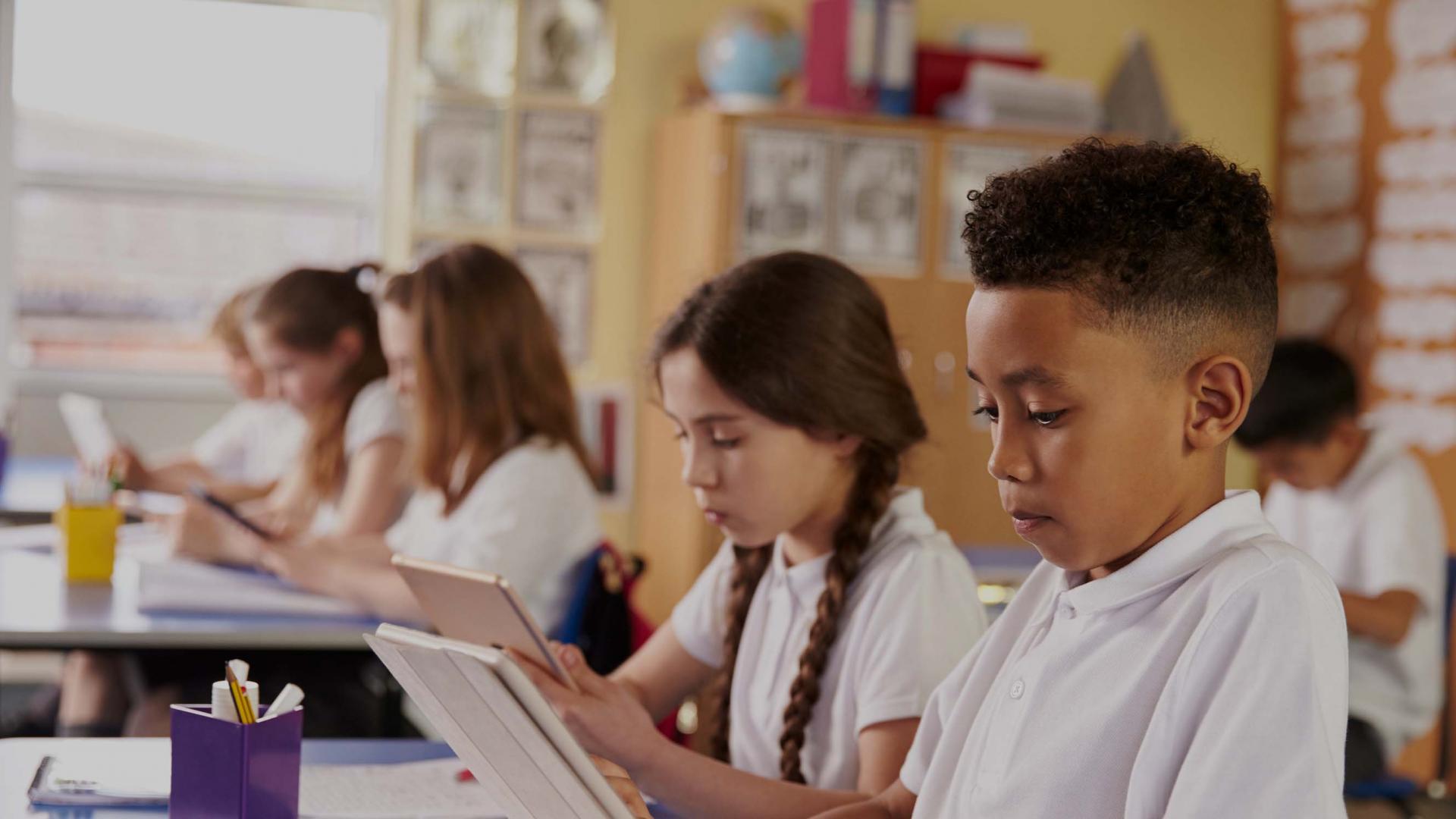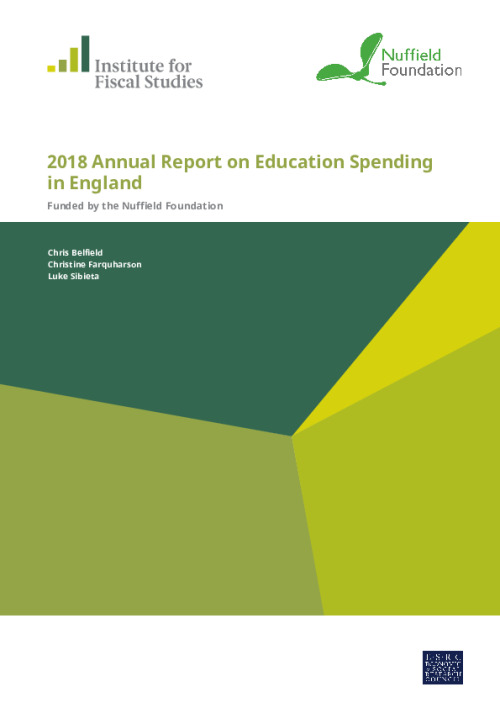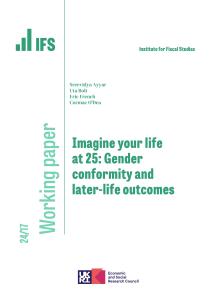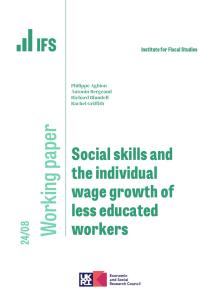Education spending is the second-largest element of public service spending in the UK behind health, representing about £90 billion in 2017–18 in today’s prices or about 4.3% of national income. The level of UK education spending has risen significantly in real terms over time, growing particularly fast from the late 1990s through to the late 2000s, before falling in real terms from 2010 onwards. Whilst important, such overall trends in total education spending tell us little about what has happened to the different areas of education spending.
Our first annual report on education spending in England provides measures of spending per student in the early years, schools, further education and higher education back to the early 1990s, which are shown in the figure below. These series of day-to-day spending per pupil allow us to understand how policy decisions have affected the resources available to students in different stages of education over the long run. We find that:
- Spending on the 3- and 4-year-old free entitlement to early education has risen from almost nothing in the early 1990s to about £3 billion in 2017–18. The new 30-hour extended entitlement has driven a £500-million spending rise in the past year, which includes a 9% rise in spending per hour. However, other early years services have seen big cuts – spending on Sure Start children’s centres has fallen by two-thirds since 2009–10.
- Total school spending per pupil has fallen by 8% in real terms between 2009–10 and 2017–18. This was mainly driven by a 55% cut to local authority spending on services and cuts of over 20% to school sixth-form funding. Funding per pupil provided to individual primary and secondary schools has been better protected and remains over 60% higher than in 2000–01, though it is about 4% below its peak in 2015.
- Funding per student aged 16–18 has seen the biggest squeeze of all stages of education for young people in recent years. School sixth forms have faced budget cuts of 21% per student since their peak in 2010–11, while further education and sixth-form college funding per student has fallen by about 8% over the same period. By 2019–20, funding per young person in further education will be around the same as in 2006–07: only 10% higher than it was 30 years earlier. Spending per student in school sixth forms will be lower than at any point since at least 2002.
- Reforms to higher education funding have increased university resources and made little difference to the long-run cost to the public purse. Universities currently receive just over £9,000 per full-time undergraduate student per year to fund their teaching. This is 22% higher than it was in 2011, and nearly 60% more than in 1997. Reforms since 2011 have cut the impact on the headline measure of the government’s deficit by about £6 billion per cohort entering higher education, but the expected long-run cost to the taxpayer has fallen by less than £1 billion.
Spending per student per year at different stages of education
